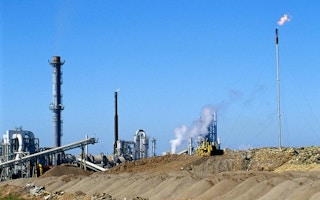Governments and industries are counting only a fraction of electricity’s true costs when choosing energy technology, according to a new study of six fossil fuels and renewable energy sources.
United States-based think-tank Civil Society Institute launched the 91 page study from independent research firm Synapse Energy Economics on Wednesday to inform US decision-making on power generation.
“The ‘Hidden Costs of Electricity’ report challenges the underlying notion of the CES (US Clean Energy Standard): that ‘clean’ can be measured by a single emission rate, ignoring land and water impacts and ignoring a technology’s full lifecycle,” noted CSI president Pam Solo in the report.
The report authors analysed available information on the full life cycles - from mining and manufacturing to decommissioning and disposal - of energy from coal, biomass, nuclear, natural gas, solar and wind. It found the hidden subsidies, damages to water supplies, unintended land-use impacts and seldom counted greenhouse gas emissions from each source.
Many of the hidden costs involved excessive water use, which the authors noted is straining water supplies in water scarce regions.
For example, mining natural gas from coalbeds resulted in the extraction of about 650 billion litres of groundwater between 1997 and 2006, according to the US Environmental Protection Agency.
While wind energy requires about 210 to 320 litres of water for each megawatt hour (MWh) of electricity produced, coal-based power plants need about 2,000 litres per MWh for the cooling alone.
Nuclear plants with closed water loops need about 2,650 to 4,160 litres per MWh for cooling. Other aspects of nuclear power generation consume anywhere from 9,800 to more than 26,000 litres per MWh.
The current drought in the US intensifies the need for policymakers to reexamine the electricity sector’s intensive water use and polluting practices, said CSI senior energy analyst Grant Smith, who urged leaders to ” hit the pause button on the headlong rush to support nuclear power and fossil fuel use”.
“The government and energy industries are literally flying blind as they plan for continued reliance on coal, natural gas, nuclear power and industrial biomass to meet our energy needs,” he added.
Tensions from the water consumption of the power sector have already hit parts of Asia.
Last month, thousands of protestors living near India’s Mahanadi River blocked railways and roads to stop the development of new coal-powered plants they said would destroy water sources for farms and villages.
In the same month, a Greenpeace study by China’s Institute of Geographical Sciences and Natural Resources Research found that coal mining and power plants were driving desertification in Inner Mongolia.
China’s coal-powered plants will consume 82 billion cubic metres of water each year by 2030, according to global consulting firm McKinsey & Co.
The CSI report noted that even fuel sources viewed as relatively clean, such natural gas, emitted quantities of greenhouse gases that were seldom included in decision-making.
Emissions from natural gas-fuelled power plants are typically between 350 and 400 grams per kilowatt hour (kWh). But the amount of greenhouse gases in other parts of the life cycle are not well known, and recent studies have found that emissions from newer methods may be much higher than expected, said the report.
By comparison, the life cycle emissions of the most widely used photovoltaic solar panels - which include resource mining and manufacturing - average about 52 grams per kWh.
Although intended for US policymakers, the CSI report provides useful information for Asia as well - but Southeast Asian countries should avoid an overly simplistic approach to energy decisions, caution experts.
Michael Quah, director of the National University of Singapore’s Energy Office, told Eco-Business that Asia’s equatorial regions lack many of the physical traits that have worked well for wind and solar industries in temperate climates.
“But global learnings that include life-cycle costing and cost-benefit analyses with regards to health, water, environmental concerns are a must-do,” he said, adding that energy efficiency programs should be the highest priority.

















